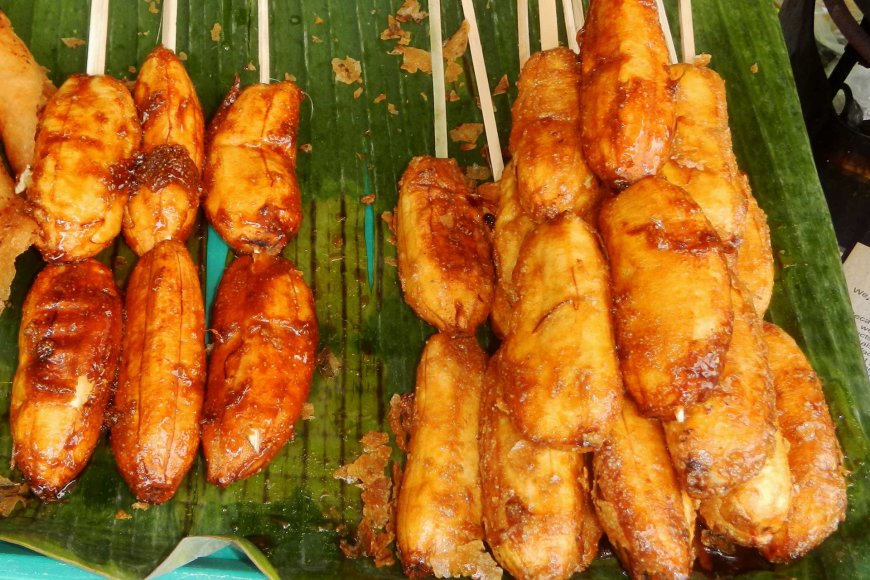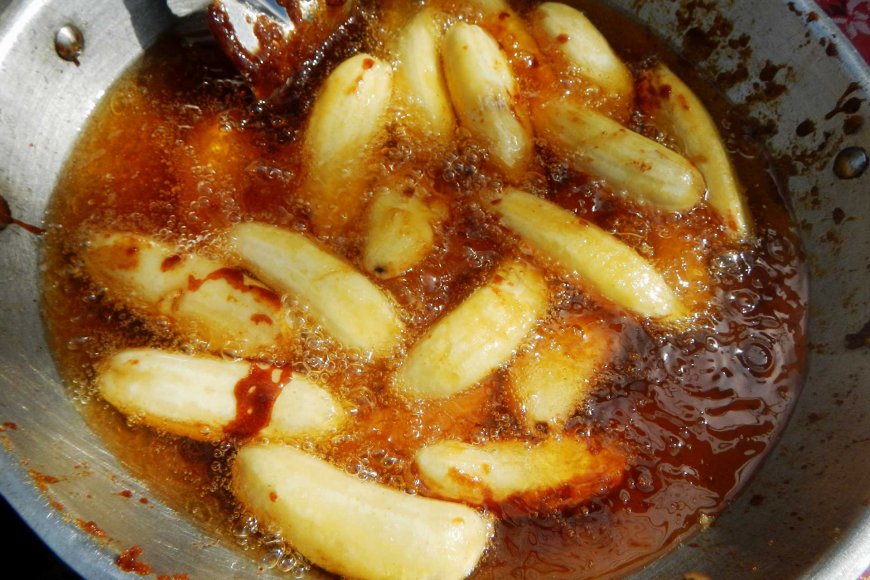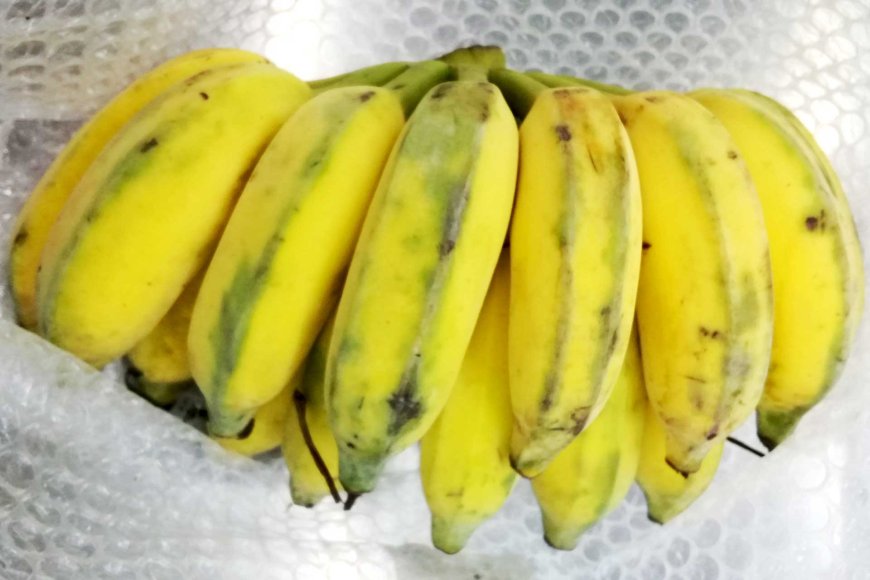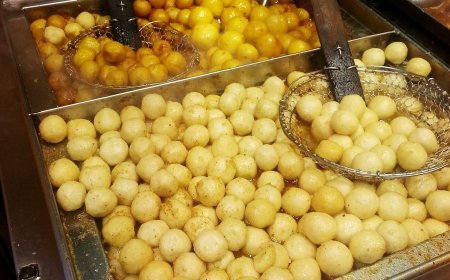Banana Cue: The Sweet Street Snack That Defines Filipino Merienda
Banana cue is a beloved Filipino street snack made from deep-fried saba bananas coated in caramelized brown sugar and served on skewers. A staple of Filipino merienda culture, it’s known for its crispy texture, sweet flavor, and nostalgic appeal across generations.

A Sweet, Crispy Classic That Unites Generations
In the colorful world of Filipino street food, few treats are as beloved and instantly recognizable as banana cue. Crispy, caramelized, and irresistibly sweet, banana cue is more than just a snack—it’s a nostalgic comfort food that brings Filipinos together across generations.
What Is Banana Cue?
Banana cue (sometimes spelled bananacue or banana Q) is a popular Filipino street food made by deep-frying ripe saba bananas (a type of cooking banana) and coating them in caramelized brown sugar. The name is a playful take on "barbecue," since the finished product is typically skewered on bamboo sticks like grilled meat, even though it’s not cooked on a grill.
Despite its simplicity, banana cue’s texture and flavor are what make it stand out. The outside of the banana becomes golden and crispy as the sugar melts and hardens into a crackly glaze, while the inside remains soft and tender. The result is a warm, sticky-sweet delight with just the right amount of chew.

A Staple of Filipino Merienda Culture
Merienda, the Filipino term for a light snack usually eaten between meals, is an important part of daily life in the Philippines. Banana cue often takes center stage during this mid-morning or mid-afternoon break, especially for students, office workers, and people on the go.
Sold in schools, markets, sidewalks, and carinderias (local eateries), banana cue is both affordable and satisfying. A typical skewer sells for just a few pesos, making it a go-to snack for anyone craving something quick and delicious.

How Banana Cue Is Made
Making banana cue at home is easy and requires only a few ingredients:
Ingredients:
- Ripe saba bananas (not too soft)
- Brown sugar
- Cooking oil (vegetable oil or coconut oil)
- Bamboo skewers
Instructions:
- Heat a generous amount of oil in a deep pan or wok over medium heat.
- Add the peeled bananas and fry them until they begin to soften slightly.
- Sprinkle brown sugar directly into the hot oil. The sugar will melt and coat the bananas.
- Stir gently to evenly coat the bananas with the caramelized sugar.
- Remove the bananas from the oil and let them cool slightly.
- Skewer one or two bananas per stick, and they’re ready to serve.

Variations and Regional Twists
While traditional banana cue remains a favorite, some regions and home cooks like to experiment by adding sesame seeds, cinnamon, or even a hint of butter to the caramel. Others may use other types of cooking bananas or try baking instead of frying for a healthier twist.
More Than Just a Snack
For many Filipinos, banana cue is a reminder of home, childhood, and shared memories. It’s the sound of vendors calling out in neighborhoods, the smell of sugar sizzling in oil, and the warmth of holding a fresh skewer on a rainy day.
In an era of fancy desserts and fast food, banana cue endures—not just because it's tasty, but because it represents the heart of Filipino culture: resourceful, sweet, and meant to be shared.
Experience the Taste of the Philippines with Banana Cue at Hard Rock Cafe Tokyo
If you're in Japan and curious to try the delicious and nostalgic taste of Filipino banana cue, don’t miss the chance to enjoy it at select Hard Rock Cafe locations in Tokyo. This beloved street snack, crispy and caramelized to perfection, is now featured as part of a special Filipino menu celebrating authentic flavors from the Philippines. For more details on where and when to find it, read the full article here: A Taste of Home: Filipino Flavors at Hard Rock Cafe Roppongi.
Nipino.com is committed to providing you with accurate and genuine content. Let us know your opinion by clicking HERE.




































































